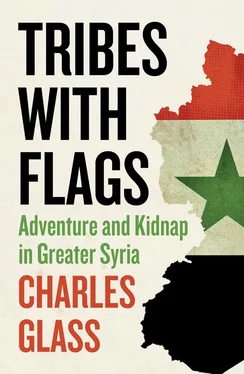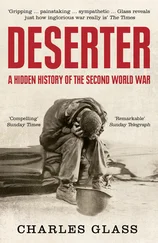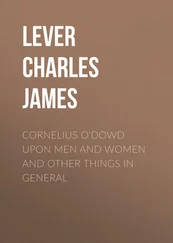The garden was quiet, but for the chirping of small birds, and cool despite the sunshine. Padre Giovanni stood to lead me on a tour of his church, where he said I could come to Mass the next day. We were on the steps of his church when an old woman walked up to him and told him in Italian with a strong southern accent to come inside and finish his lunch.
“This is my mother,” he said. “She and my father are visiting from Italy.” He promised to return to lunch in a few minutes. She walked back to the rectory, clearly disappointed.
“They built this church in 1888,” he said as we walked in, “when Alexandretta had large Italian, French, English and local Catholic communities.”
I imagined what it must have been like on a bright Sunday in those last years before nationalism and modernisation crept into the Ottoman Empire. The priest would have said Mass in Latin at the high altar, while several hundred Catholics who spoke different languages in their daily lives worshipped together. Despite changes in the world outside, the interior of the Church of the Annunciation looked unchanged, except that a new altar now faced the twelve rows of pews and the priest would say Mass in Turkish. The marble floor, in large slabs of alternating black and white, was freshly washed, looking as it must have a century earlier. The Mediterranean sun still shone through the rounded windows above the columns that lined the church, near which old women made the Stations of the Cross. Above the old altar, which symbolically faced God rather than the people, were six large baroque golden candelabra. The tabernacle was gold. There were two side altars, neither recessed, the one on the right with a large plaster statue of St Theresa, the one on the left with a similar coloured effigy of St Francis of Assisi holding the child Jesus in one hand. On the right-hand wall of the church at the back was a large frieze of St George, patron not only of England but of most eastern Christians. Above the caption, “Sancte George Ora Pro Nobis,” the saint astride his white charger held a real spear, red tipped with blood, poised to strike the already wounded green dragon, whose teeth were exposed menacingly, like a monster’s in an old horror film, sneering at the horse’s hooves and the spear at his head. This was the religion of my youth, the religion that was born in the Levant, in which St George vanquished the dragon with his spear and the Archangel Michael conquered Lucifer by the sword. Yet it was the followers of the pacific St Francis of Assisi who kept Christendom alive here. The heroes of the Crusades, the marauding Knights Templar and Hospitaller, had fled long ago.
Padre Giovanni excused himself to discuss something with the women who were cleaning the church for Palm Sunday mass the next day. I thanked him for his time and left.
Walking out of the church courtyard into the road facing Mehmet Udimir’s library, I saw a small cinema, the profane neatly adjoining the sacred. A torn poster stapled onto a board in front advertised an Italian soft-porn film starring the Eritrean actress Zeudi Araya. I went in to take a look, but found the cashier fast asleep in a chair. I decided not to wake him. A doorway covered with a blanket led into a bare room with iron and plastic folding chairs set haphazardly on the cement floor. A flat wooden ceiling above and an arched window along one wall gave the room the feel of an abandoned Spanish mission. A white sheet stretched across one wall served as the screen.
Twenty-five men and boys sat in a room that could comfortably seat 200. There seemed to be no minimum age to watch this film of a bad Italian actor fondling the breasts of, first, a bad Italian actress, and then of Zeudi Araya, a lithe African, who herself soon fondled the breasts of the Italian actress, who reciprocated by fondling Zeudi’s breasts. I feared for the young boys, some aged eight or nine, not because they were exposed to the sight of bare breasts, which I took to be harmless, but that they might grow up to believe the sole object of sex was breast-fondling. The sounds of the lovers’ heavy breathing could hardly compete with the creaking of the old projector. What little dialogue there was, mainly expletives of one and two words, had been dubbed into Turkish. The film itself was grainy, obviously the last print of an extremely cheap production.
Every so often, some of the men got up to leave, no doubt bored. A few more pre-adolescent boys drifted in, without disturbing the somnolent cashier, and sat down to watch the Italian couple find the meaning of life on a tropical island inhabited by a naked black girl. On the wrinkled sheet, an appropriate medium for projecting this particular film, Zeudi Araya sadly waved good-bye to her Italian lovers. They were sailing back to Italy and out of her life forever, which I took as my cue to depart. I did not disturb the cashier. I was certain he preferred his dreams to the twenty pence I would have paid him for my ten-minute excursion into Turkey’s world of soft porn next to the “very old” church.
I returned to the church on Palm Sunday. The old altar and pulpit stood as empty reminders of the old Latin Mass, while microphones on the new altar and lectern carried the voice of Padre Giovanni in Turkish to the eighty people, mostly well-dressed women and children, of the congregation. When the priest reached the Pater Noster, he sang it in Latin. Perhaps he did that so that his mother and father, seated at the front, would understand at least part of the ceremony. They sat like two humble Italian peasants, the mother with a black mantilla on her white hair, and the father dressed in a shirt without tie buttoned at the collar. They were indistinguishable from their fellow Mediterraneans in the church and could easily have been Turkish, Greek, Syrian, or any other race of the civilisation at the “middle of the earth”. Behind them, children dressed in white held leafy twigs, though I wondered why they did not have palm leaves from the trees outside. The Mass ended, and outside other young boys were drifting into the cinema next door for a glimpse of Zeudi Araya’s breasts.
That evening, I strolled about the town. Alexandretta was pleasant, but run-down, with unrepaired roads and crumbling buildings. There was the smell of sea-air, mixed with that of diesel fuel, and the smoke of meat grilling on coals in the popular restaurants. Most of the streets were dark, only half lit by old street lights.
My exploration of Alexandretta’s limited night life was brief. On one street near Mehmet Udimir’s library, two night clubs stood side by side. One was the Kazablanca, and the other was the Tanca Bar. Their exteriors were lit with coloured lights, blinking in the darkness like Christmas trees, lights that were identical in border towns and ports from Tijuana, Mexico, to Trabzon. They beckoned the stranger into a forbidden world which, at its best, would be merely disappointing. There were men standing outside in cheap light suits, bright ties and pencil moustaches – the uniform of cabaret doormen throughout the world. Two of them were beckoning unwary pedestrians into the Kazablanca, so I walked into the Tanca, which at that moment had no one at the door.
As soon as I was inside, I knew I had made a mistake. It was so dark I could not see. I felt my way along a short, low corridor to a doorway which opened onto a long, only slightly less dark room. When my eyes adjusted, I saw that the ceilings were vaulted, strangely covered in a knitted pattern of wood slats. The twining wood all round gave the cavern a sylvan feel, in the worst and most forbidding sense, recalling fairy stories in which the child is warned not to go into the woods alone at night. I waited for the wolf.
The head waiter, dressed like the doormen of the Kazablanca, motioned me to an empty table. Men, alone or in groups, sat at other tables in rows along either long wall between the door and the bar. In the central file between the men’s tables were those of “the girls,” who sat together impassively, more than a dozen of them. None was sitting with any of the men. In ill-fitting dresses, with costume jewellery and dyed hair, they appeared to be either plain bar girls, there to encourage men to buy more drinks, or prostitutes. They were unusually ugly and unforthcoming for either. On the wooden dance floor, in front of which a three-man band was laconically playing “Oriental” music, there were no dancers, strippers, or even magicians.
Читать дальше












